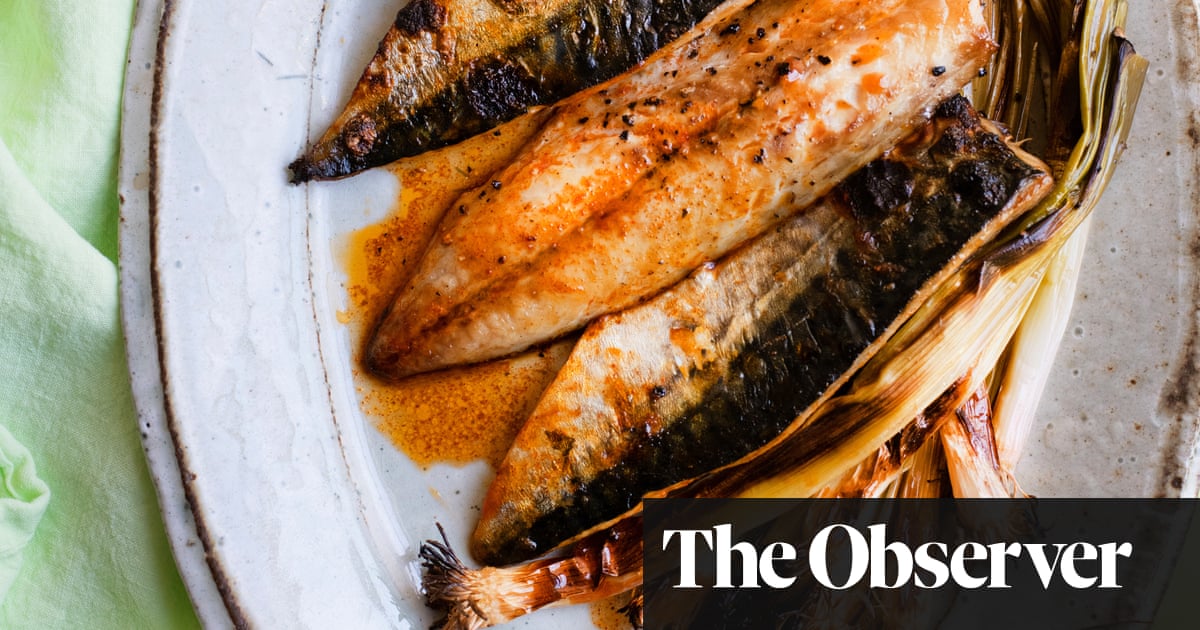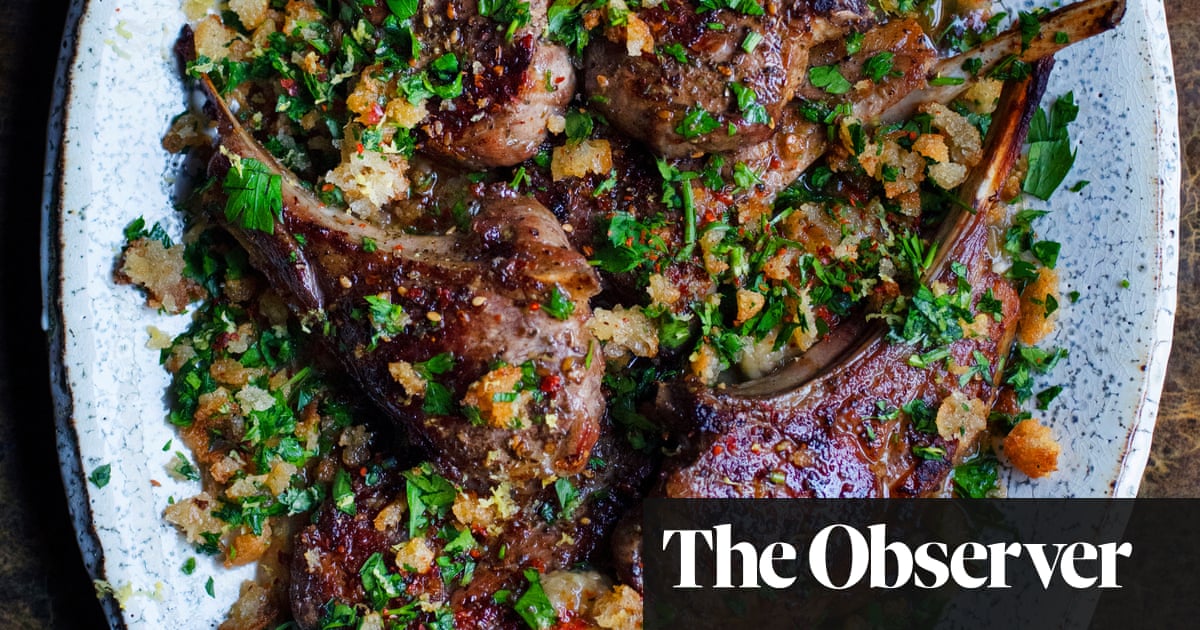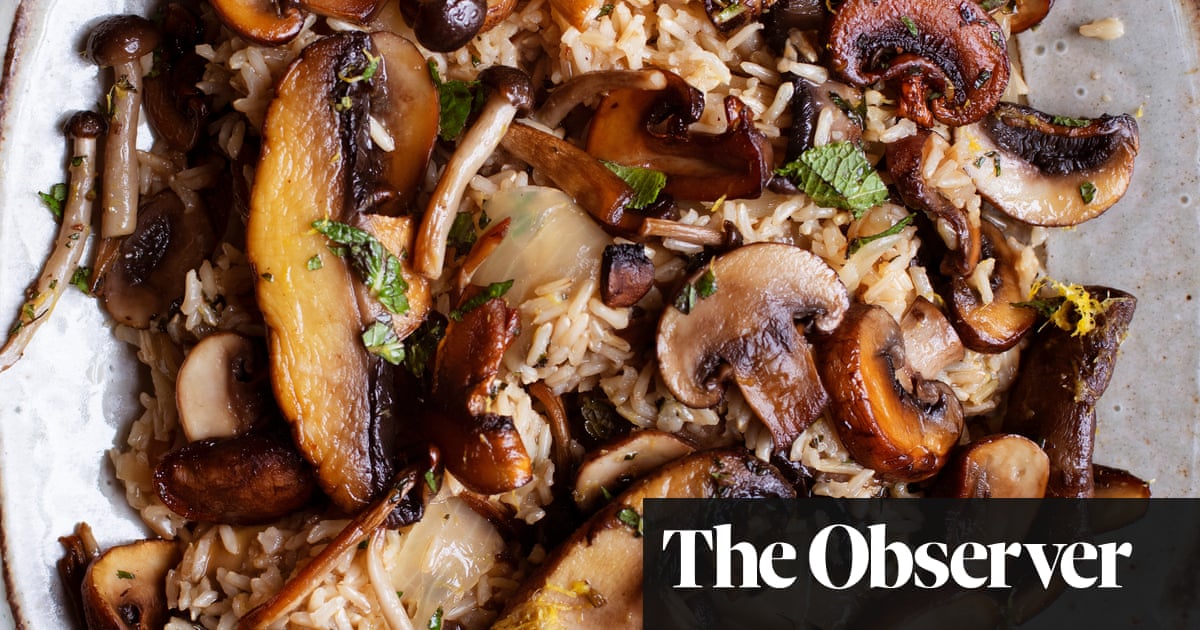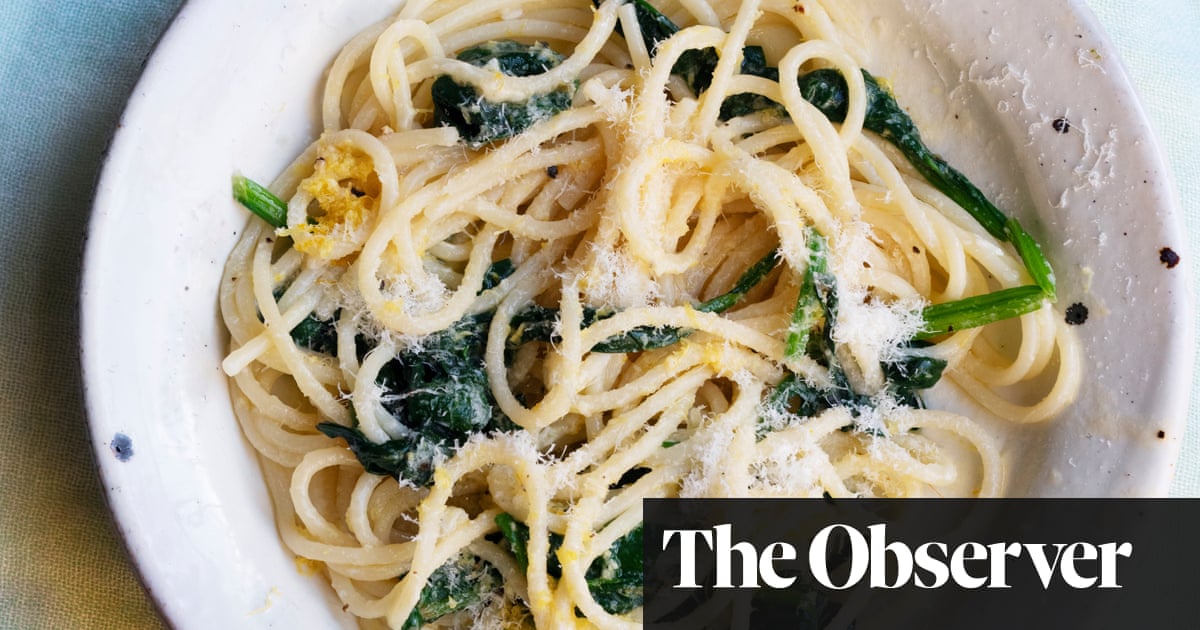
The words, chalked in upper case on a grey board, greet me from afar: CARLINGFORD OYSTERS. CORNISH MACKEREL. For once, my mind is made up even before I set foot in the shop. I glance at some tempting sea bass and a bag of tiny mussels, shells closed tight, but I go with the recommendation. You learn to trust your local shopkeepers.
I do almost nothing with the oysters save a tiny squeeze of lemon. They have a briny, slap-you-in-the-face freshness and set us up for a fish supper of grilled mackerel with cider vinegar and paprika, and a plume of grilled spring onions. I sometimes struggle to get mackerel off the bars of the griddle, so decide to cook it with heat from above, under the oven grill. The fillets are turned halfway through, to crisp the skin, something I relish, even if others don’t.
As the fish cooks, I brush it with a dressing of cider vinegar, caster sugar – just a pinch – and introduce a smoky note with a dusting of hot paprika over its flesh. The heat, acidity and smoky notes are just what the oily flesh of a silvery blue mackerel needs.
Despite the welcome sunshine, the evenings are still a bit nippy and I am still bringing out carb-centric suppers. This week, a dish of polenta baked with cream and cheese, a dinner that I tend to keep for winter and early spring nights. To mop the blue-cheese sauce from our plates, a crunchy salad of frisée and crisp, conference pears.
You could also cook the mackerel on the bone. In which case I would roast it rather than use the grill. You need a very hot oven so that the skin crisps, 200C/gas mark 6 is best, and a cooking time of about 20 minutes (check by teasing the flesh from the bone, it should come away easily if it is ready), turn it halfway through. Brush the fish generously with the dressing as it roasts and continue cooking until the skin is lightly crisp.
With oily fish like mackerel, I tend to line the grill pan with foil, to make for easier cleaning, but it responds exceptionally well to being cooked directly on the bars of a griddle, too. Just make sure to brush the skin with a little oil to prevent it sticking. If your spring onions are large, split them lengthways and turn them once during cooking. Serves 2
For the dressing:
white wine or cider vinegar 50ml
lemon juice 1 tbsp
thyme leaves 1 tsp
caster sugar 1 tsp
groundnut or vegetable oil 50ml
For the mackerel:
spring onions 4
mackerel fillets 4
In a jam-jar with a tight-fitting lid, put the vinegar, lemon juice, a little salt and ground black pepper. Add the thyme leaves, sugar and oil and shake to mix. Pour half the dressing into a small bowl and set aside.
Line a baking sheet with foil. Preheat an overhead (oven) grill. Cut the spring onions in half lengthways, trimming off the darkest of the green leaves as you go. Brush them with a little of the dressing, then place under the grill until soft and nicely browned. Remove to a warm place.
Season the mackerel fillets and place them skin side down on the foil-lined baking sheet. Brush with some of the dressing, then place under the grill for 6 to 8 minutes until the flesh is starting to brown. Carefully turn the fillets over with a palette knife.
Transfer the mackerel and spring onions to plates, spoon over the reserved dressing and serve.
Baked polenta with spinach and gorgonzola
Try to get spinach with crisp, thick stems and pointed, arrow-shaped leaves. If all you can get hold of is the rounded “salad” variety, that is fine, too, but cook the leaves only very briefly (a quick dunk in and out of the boiling water will be enough). Being smaller, don’t feel obliged to chop them. The softer the gorgonzola, the better. Serves 2
water 1 litre
instant polenta 250g
spinach leaves 200g
gorgonzola 350g
double cream 250ml
parmesan 50g, finely grated
Put the water on to boil, salt it generously (as you would for pasta) sprinkle in the polenta, then stir almost constantly until thick. Lower the heat (wear an oven glove) and stir until the polenta stops erupting and thickens – about 3 minutes. Tip the polenta out on to a lightly oiled baking tray or dish, about 20cm x 30cm, smooth the top and set aside to cool.
Wash the spinach leaves and while they are still wet, put them in a deep saucepan over a moderate heat. Cover tightly with a lid and let the leaves steam for a couple of minutes. Drain the spinach and squeeze the water from the leaves with your fist, then roughly chop the leaves and set aside.
Preheat the oven to 190C/gas mark 5. Using a cookie cutter, cut round discs of polenta about 5cm in diameter. Butter a shallow baking dish – I use one about 24cm in diameter – then place a layer of the polenta discs in the bottom. Dot the gorgonzola and spinach over the polenta, then repeat with more of the polenta and the remaining spinach. Season the cream with black pepper, then pour over the polenta. Dust the surface with the grated parmesan and bake for 25-30 minutes until bubbling.
We aim to publish recipes for fish rated as sustainable by the Marine Conservation Society’s Good Fish Guide












